Yahsat awarded $23M contract to supply advanced satellite communications for UAE satellites
Friday, 20 May 2022 10:38 Al Yah Satellite Communications Company PJSC, the UAE's flagship satellite solutions provider, has announced that its dedicated government arm, Yahsat Government Solutions (YGS), has been successfully awarded a contract by the UAE Government, to provide satcom capabilities for its platforms.
To supplement and support the UAE Government contract, YGS has also been awarded a contract by the
Al Yah Satellite Communications Company PJSC, the UAE's flagship satellite solutions provider, has announced that its dedicated government arm, Yahsat Government Solutions (YGS), has been successfully awarded a contract by the UAE Government, to provide satcom capabilities for its platforms.
To supplement and support the UAE Government contract, YGS has also been awarded a contract by the Final Pleiades Neo satellites ready to join rest of family
Friday, 20 May 2022 10:38 The last two satellites of the Airbus-built, owned and operated Pleiades Neo constellation are on track for launch later this year, following successful final tests in Toulouse's clean rooms.
Following the seamless parallel integration of both Pleiades Neo 5 and 6 satellites, and the successful conclusion of the environment (thermal vacuum, acoustic, vibration) test campaign, both final sp
The last two satellites of the Airbus-built, owned and operated Pleiades Neo constellation are on track for launch later this year, following successful final tests in Toulouse's clean rooms.
Following the seamless parallel integration of both Pleiades Neo 5 and 6 satellites, and the successful conclusion of the environment (thermal vacuum, acoustic, vibration) test campaign, both final sp For plasma with a hot core and cool edges, Super-H mode shows promise
Friday, 20 May 2022 10:38 Future fusion reactors have a conundrum: how to maintain a plasma core that is hotter than the surface of the sun without melting the device walls. Researchers call this challenge "core-edge integration." One method of cooling the plasma edge is to inject impurities such as nitrogen. The impurities absorb heat and release the energy as light that dissipates evenly across the walls.
New res
Future fusion reactors have a conundrum: how to maintain a plasma core that is hotter than the surface of the sun without melting the device walls. Researchers call this challenge "core-edge integration." One method of cooling the plasma edge is to inject impurities such as nitrogen. The impurities absorb heat and release the energy as light that dissipates evenly across the walls.
New res The future of desalination?
Friday, 20 May 2022 10:38 Water scarcity is a growing problem around the world. Desalination of seawater is an established method to produce drinkable water but comes with huge energy costs. For the first time, researchers use fluorine-based nanostructures to successfully filter salt from water. Compared to current desalination methods, these fluorous nanochannels work faster, require less pressure and less energy, and a
Water scarcity is a growing problem around the world. Desalination of seawater is an established method to produce drinkable water but comes with huge energy costs. For the first time, researchers use fluorine-based nanostructures to successfully filter salt from water. Compared to current desalination methods, these fluorous nanochannels work faster, require less pressure and less energy, and a Vandenberg Space Force Base celebrates first-year milestones
Friday, 20 May 2022 10:38 A year after becoming part of the Department of Defense's newest branch, Vandenberg Space Force Base's community paused to celebrate May 11, 2022.
During a ceremony held at the base's Pacific Coast Club, both Col. Rob Long, commander, Space Launch Delta 30, and Chief Master Sgt. Jason DeLucy, command chief master sergeant, Space Launch Delta 30, showcased highlights from the past year.
A year after becoming part of the Department of Defense's newest branch, Vandenberg Space Force Base's community paused to celebrate May 11, 2022.
During a ceremony held at the base's Pacific Coast Club, both Col. Rob Long, commander, Space Launch Delta 30, and Chief Master Sgt. Jason DeLucy, command chief master sergeant, Space Launch Delta 30, showcased highlights from the past year. The search for how life on Earth transformed from simple to complex
Friday, 20 May 2022 10:38 Once upon a time, all life on Earth was alien. But eventually, strange single-celled organisms thriving on a harsh planet gave way to complex, multicellular organisms made up of the basic building blocks we associate with life today, including carbon, oxygen and nitrogen.
Announced by NASA this week, a new collaboration of astrobiology researchers across the country working together under
Once upon a time, all life on Earth was alien. But eventually, strange single-celled organisms thriving on a harsh planet gave way to complex, multicellular organisms made up of the basic building blocks we associate with life today, including carbon, oxygen and nitrogen.
Announced by NASA this week, a new collaboration of astrobiology researchers across the country working together under 'Chariots of Fire' and 'Blade Runner' composer Vangelis dies aged 79
Friday, 20 May 2022 10:38 "Blade Runner" and "Chariots of Fire" composer Vangelis, the Oscar-winning electronic music pioneer whose distinctive musical style defined a generation of film soundtracks, has died aged 79, Greece's prime minister said on Thursday.
According to several Greek media outlets, Vangelis died of the coronavirus in France where he lived part-time, as well as in London and Athens.
"Vangelis Pa
"Blade Runner" and "Chariots of Fire" composer Vangelis, the Oscar-winning electronic music pioneer whose distinctive musical style defined a generation of film soundtracks, has died aged 79, Greece's prime minister said on Thursday.
According to several Greek media outlets, Vangelis died of the coronavirus in France where he lived part-time, as well as in London and Athens.
"Vangelis Pa Massive eruption of Tongan volcano provides an explosion of data
Friday, 20 May 2022 10:38 The Hunga volcano ushered in 2022 with a bang, devastating the island nation of Tonga and sending aid agencies, and Earth scientists, into a flurry of activity. It had been nearly 140 years since an eruption of this scale shook the Earth.
UC Santa Barbara's Robin Matoza led a team of 76 scientists, from 17 nations, to characterize the eruption's atmospheric waves, the strongest recorded fr
The Hunga volcano ushered in 2022 with a bang, devastating the island nation of Tonga and sending aid agencies, and Earth scientists, into a flurry of activity. It had been nearly 140 years since an eruption of this scale shook the Earth.
UC Santa Barbara's Robin Matoza led a team of 76 scientists, from 17 nations, to characterize the eruption's atmospheric waves, the strongest recorded fr Space Perspective raises $17 million
Friday, 20 May 2022 10:25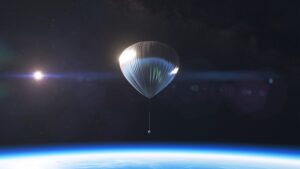
Space Perspective has raised an additional $17 million to further development of its stratospheric passenger balloon system that simulates one aspect of spaceflight.
The post Space Perspective raises $17 million appeared first on SpaceNews.
Chinese launch startup Orienspace raises $59.9 million in Series A round
Friday, 20 May 2022 07:16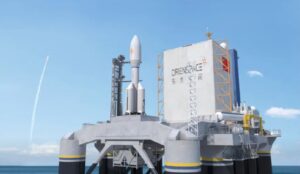
Chinese launch vehicle developer Orienspace has raised $59.9 million in a Series A funding round, which the company says it will use for a first rocket launch and new engine development.
Earth from Space: Bonn, Germany
Friday, 20 May 2022 07:00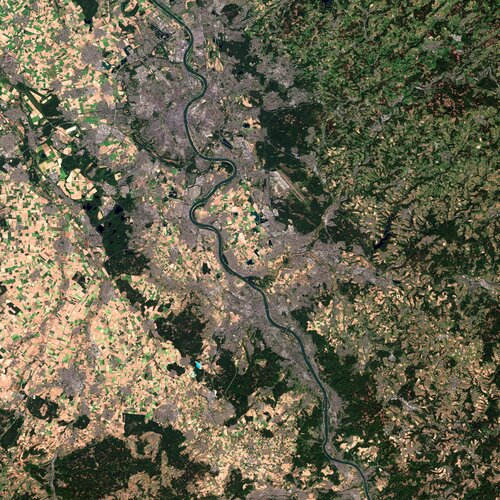
ESA’s Living Planet Symposium – one of the largest Earth observation conferences in the world – is being held on 23–27 May in Bonn, Germany. Held every three years, the symposium brings together scientists and researchers, as well as industry and users of Earth observation data, from all over the world to present and discuss the latest findings on Earth science.
Webb telescope nearly set to explore the solar system
Friday, 20 May 2022 04:51
As NASA's James Webb Space Telescope moves through the final phases of commissioning its science instruments, we have also begun working on technical operations of the observatory. While the telescope moves through space, it will constantly find distant stars and galaxies and point at them with extreme precision to acquire images and spectra. However, we also plan to observe planets and their satellites, asteroids, and comets in our solar system, which move across the background stars of our galaxy.
Boeing's troubled Starliner launches for ISS in key test
Thursday, 19 May 2022 22:50 American aerospace giant Boeing launched its Starliner capsule for the International Space Station Thursday in a critical uncrewed test flight that followed years of failures and false starts.
The Orbital Test Flight 2 (OFT-2) mission blasted off at 6:54 pm Eastern Time (2254 GMT) from the Kennedy Space Center in Florida, with the spaceship fixed atop a United Launch Alliance Atlas V rocket.
American aerospace giant Boeing launched its Starliner capsule for the International Space Station Thursday in a critical uncrewed test flight that followed years of failures and false starts.
The Orbital Test Flight 2 (OFT-2) mission blasted off at 6:54 pm Eastern Time (2254 GMT) from the Kennedy Space Center in Florida, with the spaceship fixed atop a United Launch Alliance Atlas V rocket. Atlas 5 launches Starliner on second uncrewed test flight
Thursday, 19 May 2022 22:32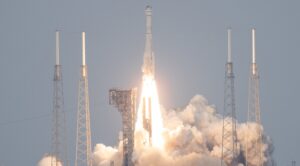
Boeing’s CST-100 Starliner spacecraft is on its way to the International Space Station on a critical, long-delayed uncrewed test flight of the commercial crew vehicle.
The post Atlas 5 launches Starliner on second uncrewed test flight appeared first on SpaceNews.
Telesat tests LEO broadband prototype in India
Thursday, 19 May 2022 21:18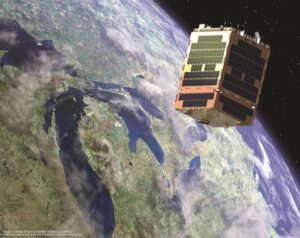
Telesat said May 18 it demonstrated high-speed connectivity in India last month using a four-year-old prototype satellite
The post Telesat tests LEO broadband prototype in India appeared first on SpaceNews.

